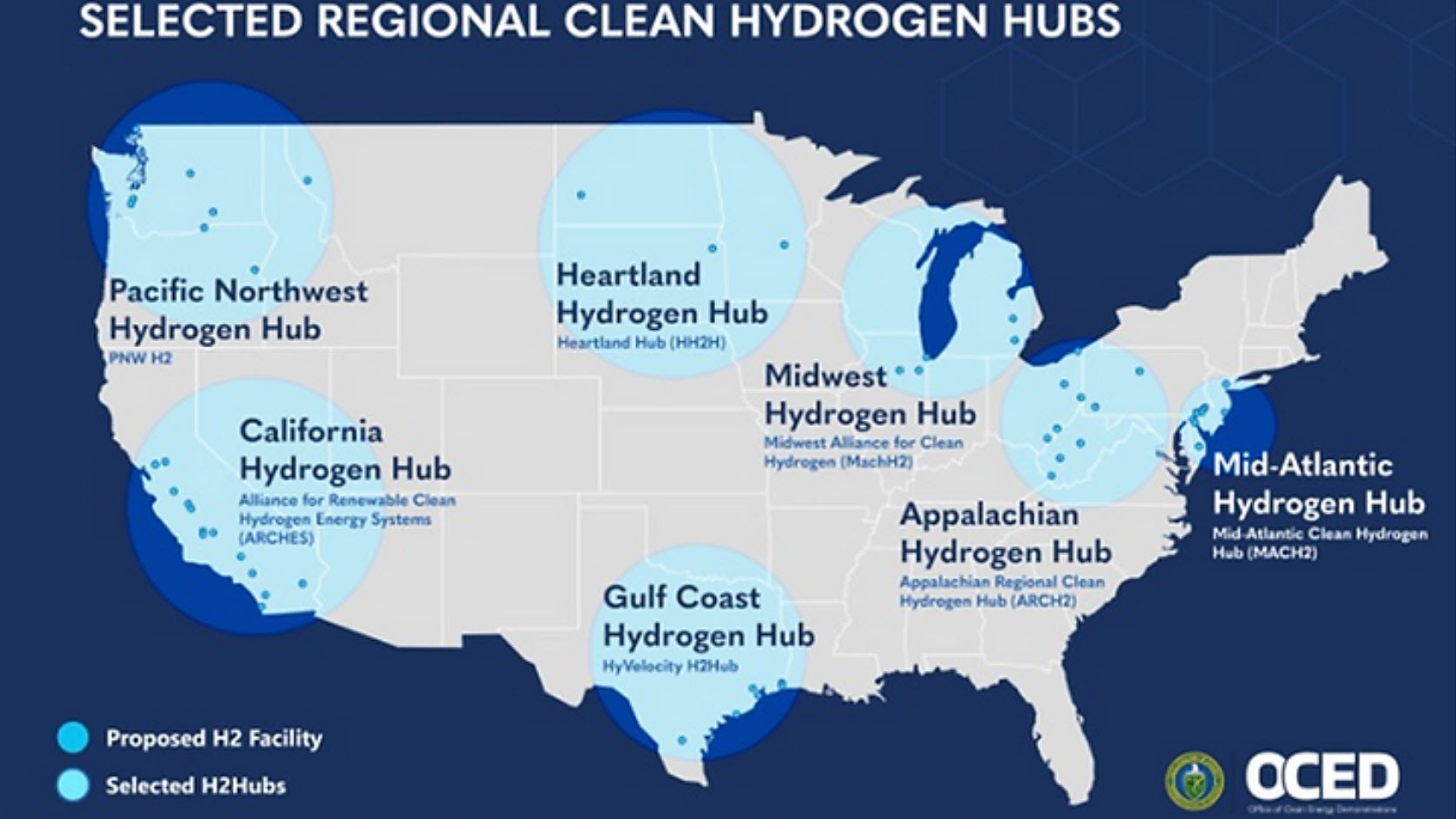![Zero-emission fuel cell electric bus [image courtesy of Canva]](https://blog.ballard.com/hs-fs/hubfs/OCED%20Hydrogen%20Hubs%20(1).png?width=1920&height=1080&name=OCED%20Hydrogen%20Hubs%20(1).png)
Ballard Power Systems recently marked the 30th anniversary of powering its very first fuel cell bus, which was unveiled in Vancouver, Canada in June 1993. Since then, the company has expanded its fuel cell technology footprint across heavy-duty mobility and reached into increasingly diverse market verticals, including trucks, marine, rail, and stationary power generation. As Ballard enters its next phase of commercialization, Tim Sasseen, market development director, North America, looks at Ballard's growth trajectory in the region.
Since joining Ballard in 2000, Tim has seen the business evolve from small-scale experimental programs on the engineering side, to leading commercial strategy and steering the company’s focus and participation in an industry that is now set to experience massive expansion across the North American continent. With tremendous growth seen in the fuel cell electric bus market already, there is also now significant interest in building technology, expertise and infrastructure to support similar progress in truck, marine and rail markets – and at pace.
Here, Tim speaks about the fast growing zero-emission environment in the region, the benefits of hydrogen and fuel cell adoption, and what needs to change in order to achieve successful large-scale fleet implementation across numerous market verticals. You can listen to the full podcast here.

Growth in the North America Market
Ballard’s transition into the U.S. market thus far has been encouraging, with the country in many ways proving the strongest proponent for Ballard’s products in North America thanks to a strong and consistent approach to developing policy for fuel cell electric buses.
Ballard’s activities in the U.S. are something of a torch-bearing operation that are now guiding and informing the region’s progress in adopting zero-emission technology and infrastructure - an encouraging development, where some authorities had previously shown some reluctance to change.
For example, with an initial deployment of 20 fuel cell electric buses in Vancouver for the 2010 Winter Olympics, Ballard’s fuel cell engine performed excellently on a challenging route in harsh, winter conditions that presented corrosion, high altitude and rough terrain. Despite executing their job well, the solution was an expensive one – with the price point of hydrogen at roughly twice what alternatives could offer – leading the government of British Columbia to pause any further development at the time.
To combat sceptical attitudes and drive progress, the U.S. government has ploughed significant resources into new schemes that aim to establish hydrogen as a recognized and viable solution to power public transit and other modes of mid- and heavy-duty transport. Introducing policies and funding streams – such as the Federal Transit Administration’s Low-No program and the Office of Clean Energy Demonstrations’ introduction of Hydrogen Hubs – has been transformative for the zero-emission vehicle landscape.
Thanks to these projects, adopter uptake has recently sky-rocketed and with more than $1bn invested annually in the Low-No program for five successive years, the impact has been huge. As a result, the U.S. is forging firmly ahead of the competition in this space and into more mature development of the hydrogen economy.

Canada is starting to pick up here and is now dedicating tangible resources and finances towards programs to promote decarbonization on a wider scale and support end-user transition. Ballard currently has fuel cell electric buses running in cold service in Strathcona and Edmonton, Alberta, which have performed well for operators and with more on order poised for operational service in several other Canadian cities soon.
The growth projection for North America is favorable for Ballard to capitalize on, utilizing its technical understanding and industry experience to power an increasing number of customer applications across the continent – with an expectation to progress significantly in South America over the next five years as interest from Brazil, Chile and other countries in Latin America continues to take shape.
Progress through Policy
The Inflation Reduction Act (IRA) is already reaping significant commercial reward in the U.S. – with cost-cutting positively impacting energy, and increased industry supply through investments in manufacturing. When it comes to similar measures being implemented in Canada, there is already talk about change in relation to carbon fuel standards and carbon pricing, and the Canadian government is currently working on improving policy there.
With the passing of the IRA, most of the rest of the world is now looking to the U.S. as a leader in policy making in the space, with the introduction of more lucrative initiatives generating great appeal to hydrogen producers globally and attracting domestic development that might otherwise have gone to Europe or Asia.
We expect to see similar movements in Canada where the success of these policies and new start-up projects will be adopted in some form by the Canadian government, perhaps with as much as a three-year lag on the U.S., but it is clear that the U.S.’s success here is informing the green strategy of many other nations going forward.
Future Development
When it comes to regional growth, California isn’t an isolated outlier for decarbonization and zero-emission vehicle deployment any longer. The U.S. Federal Government is now stepping up to the plate in terms of funding for technology, projects, infrastructure, and training – and other states are following suit with new creative and effective production projects and vehicle fleet deployments that are aiming to fast-track fuel cell electric buses onto their public roads.
Now that the $7bn-funded Hydrogen Hubs program has been announced by the government, there will soon be greater clarity and alignment on where the industry needs to focus - pointing players in the right direction towards identified regions of concerted development, including hydrogen.

Centers of activity are expected to expand rapidly out from simply California and New York to new selected areas including Texas, which has extensive experience, tremendous operational capability for hydrogen, and a wealth of resources to prove successful. As policies continue to develop proactively at the Federal level and if the industry can start to adequately reduce capital costs, Texas is well placed to emerge as a leader in renewable energy and clean hydrogen in the years to come.
For organizations, bodies and individuals within the hydrogen ecosystem, the time for maturity is here. The industry needs to act as responsible commercial participants in the energy space and keep a pragmatic approach to feasible solutions.
Hydrogen players must retain a constant dialog across the landscape – regardless of approach to zero-emission – as participation in the new energy transition will be universal, and the most effective changes will be achieved when those companies currently making non-renewable energy shift to decarbonized solutions, rather than cutting them out altogether, as their capabilities will be invaluable in assisting the overall net zero drive.
Realistically, the industry has roughly two-and-a-half decades to make this transition. There is still plenty to work on, agree upon, and establish so there is little room for error. The key is to generate a collaborative – not combative – ecosystem of contributors across the hydrogen value chain. With the introduction of practical policy and financial assistance providing tangible support for infrastructure, technology and training, attitudes are clearly transforming industry-wide with the promise of implementing effective change – and that gives plenty of hope for the future.